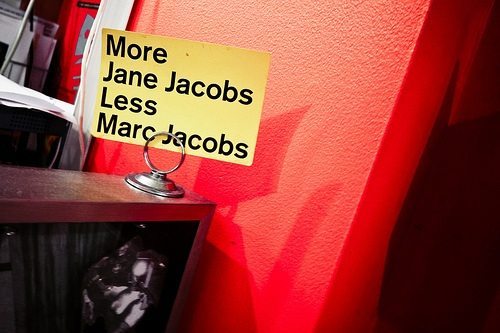
The New Yorker this week grapples with the question: Why Are There So Many Shuttered Storefronts in the West Village? The article begins with a focus on the House of Cards & Curiosities which for twenty years successfully managed its unique business on Eighth Avenue between Jane and West 12th Streets; it will close later this week. I lived around the corner from it at one time. (I had a funny experience once looking at the little figures in the window when the store was closed and having a bit of a surprise – but will save that for another day.)
From the article by Tim Wu:
Its closing leaves four shuttered storefronts on just one block. With their papered-up windows and fading paint, the failed businesses are a depressing sight in an otherwise vibrant neighborhood. Each represents a broken dream of one kind or another.
The fate of the House of Cards & Curiosities is just one example of something odd that’s happening in some of New York’s richest and best-known neighborhoods—a surge in closings and shuttered shops. Consider, in particular, the West Village, the place that Jane Jacobs once described as a model for a healthy neighborhood, in her classic book “The Death and Life of Great American Cities.” The average per-capita income there is now more than a hundred and ten thousand dollars per year, and it retains its jazz clubs and fancy restaurants. It is both rich and vibrant, yet also now blighted with shuttered stores in various states of decay.
Abandoned storefronts have long been a hallmark of economic depression and high crime rates, but the West Village doesn’t have either of those. Instead, what it has are extremely high commercial rents, which cause an effect that is not dissimilar. “High-rent blight” happens when rising property values, usually understood as a sign of prosperity, start to inflict damage on the city economics that Jane Jacobs wrote about.
In the West Village, rent spikes are nearly universally reported as the reason so many storefronts have closed over the past few years. Cafe Angelique reportedly closed when its sixteen-thousand-dollar rent increased to forty-two thousand dollars. A Gray’s Papaya on Eighth Street closed after its owner reported a rent increase of twenty thousand dollars per month. “We are witnessing our destruction,” Nicky Perry, the outspoken owner of the neighborhood restaurant Tea & Sympathy, said. She called the situation “insane.”
Compounding the problem is the fact that the closed storefronts often stay that way, sometimes for years, in an apparent contradiction of the law of supply and demand. If a storefront remains empty for a long time (like this restaurant, which has been shuttered for more than six years), basic economics suggest that the price being charged is too high. So why doesn’t the owner lower the rents?

There are potentially some tax benefits for the owners of empty storefronts. But the more likely explanation is that landlords are willing to lose a tenant and leave a storefront empty as a form of speculation. They’ll trade a short-term loss for the chance eventually to land a much richer tenant, like a bank branch or national retail chain, which might pay a different magnitude of rent.

The preservationist Jeremiah Moss, the author of the Vanishing New York blog, points out that Greenwich Village has been a bohemian center since the eighteen-fifties, but, since the rise in rents, it “no longer drives the culture,” and instead is becoming what James Howard Kunstler termed “a geography of nowhere.” It is possible that entire classes of stores may disappear from some neighborhoods, like mid-range restaurants, antique stores, curiosity shops, bookstores, and anything too experimental.
I knew Sung Chun Mei, the restaurant referenced in the article as closed and sitting shuttered for six years (picture above), well. It was a vibrant thriving business, a Chinese restaurant I considered my “go to” place to order dinner often. It is hard for me to even think of it as closed.
Jane Jacobs’s premise was on “the old,” the unique, the “strange,” being an integral part of thriving cities. City officials have, for years, pretended they understand what she was writing about but really most don’t have a clue.
Top Photo via Google Street View
Middle Photo via New Yorker
Bottom Photo: Park Slope Lens

